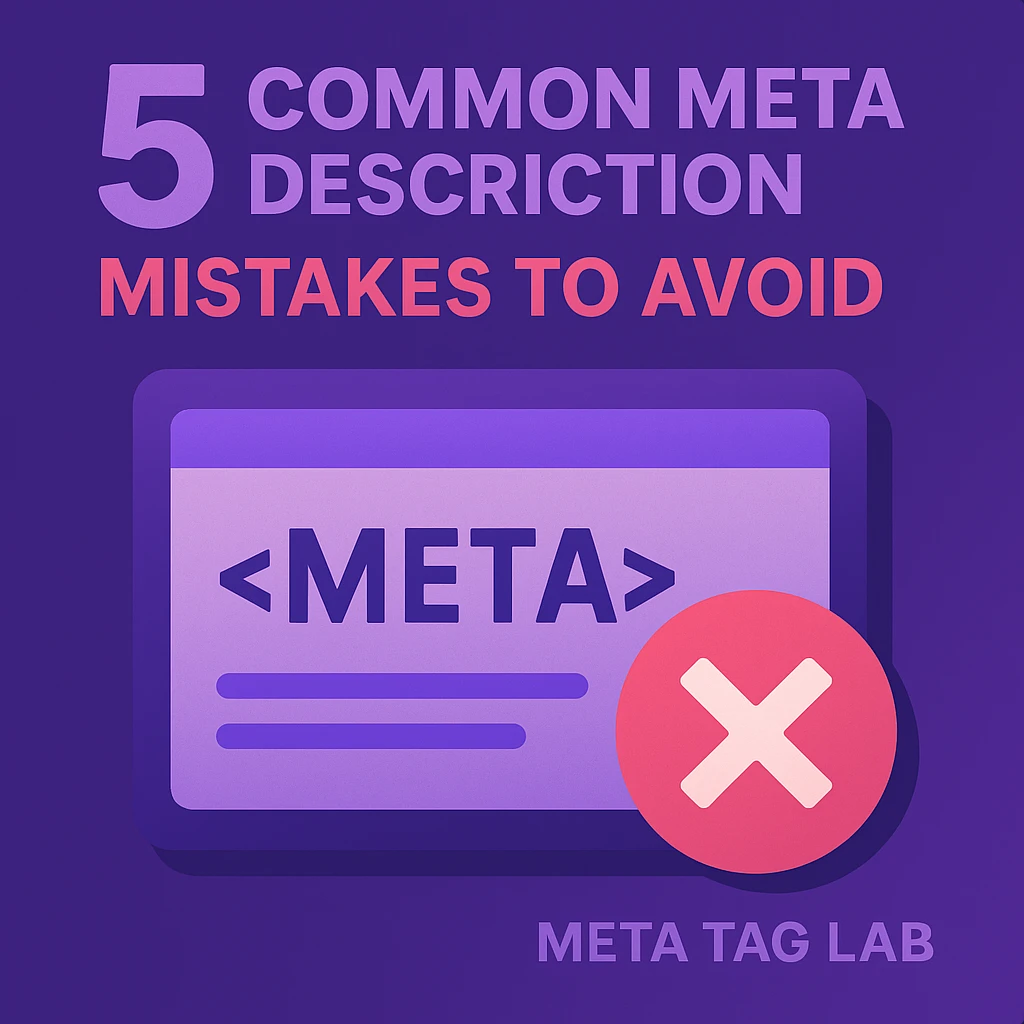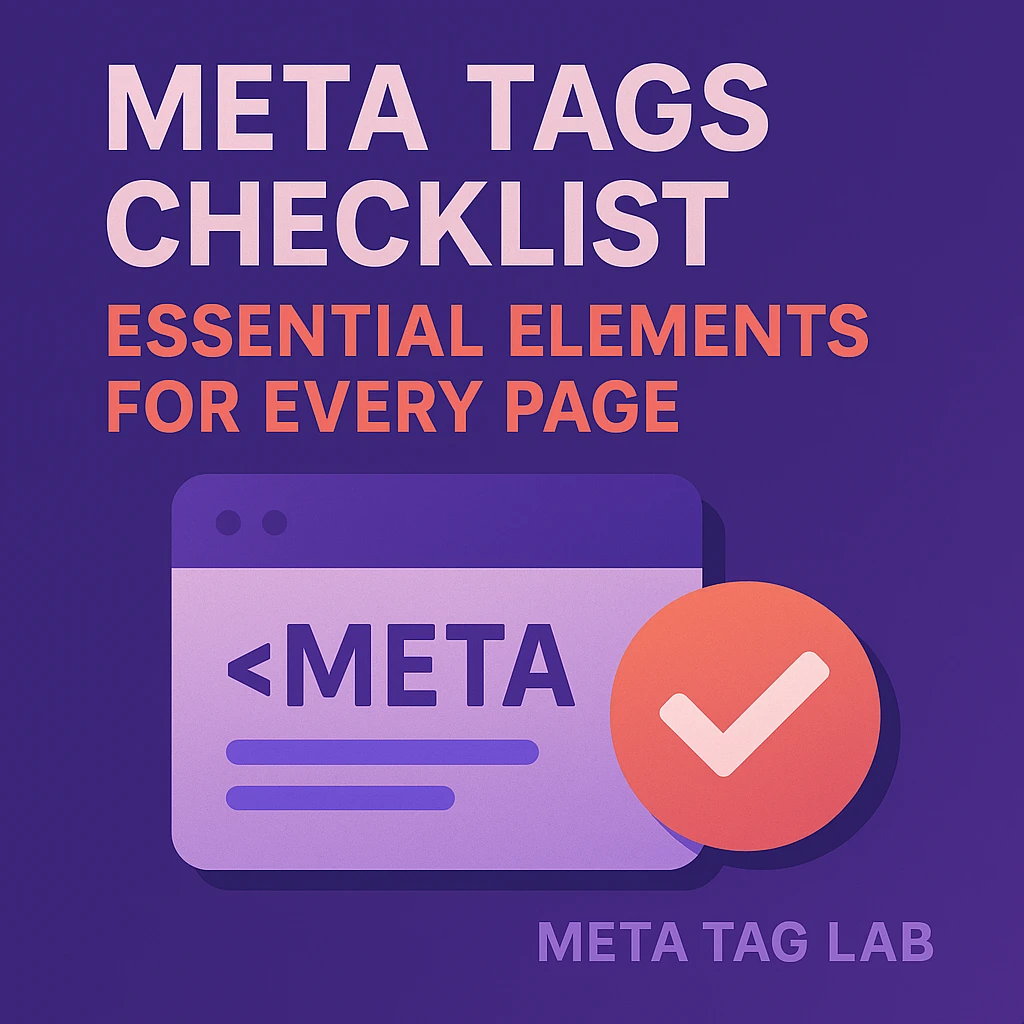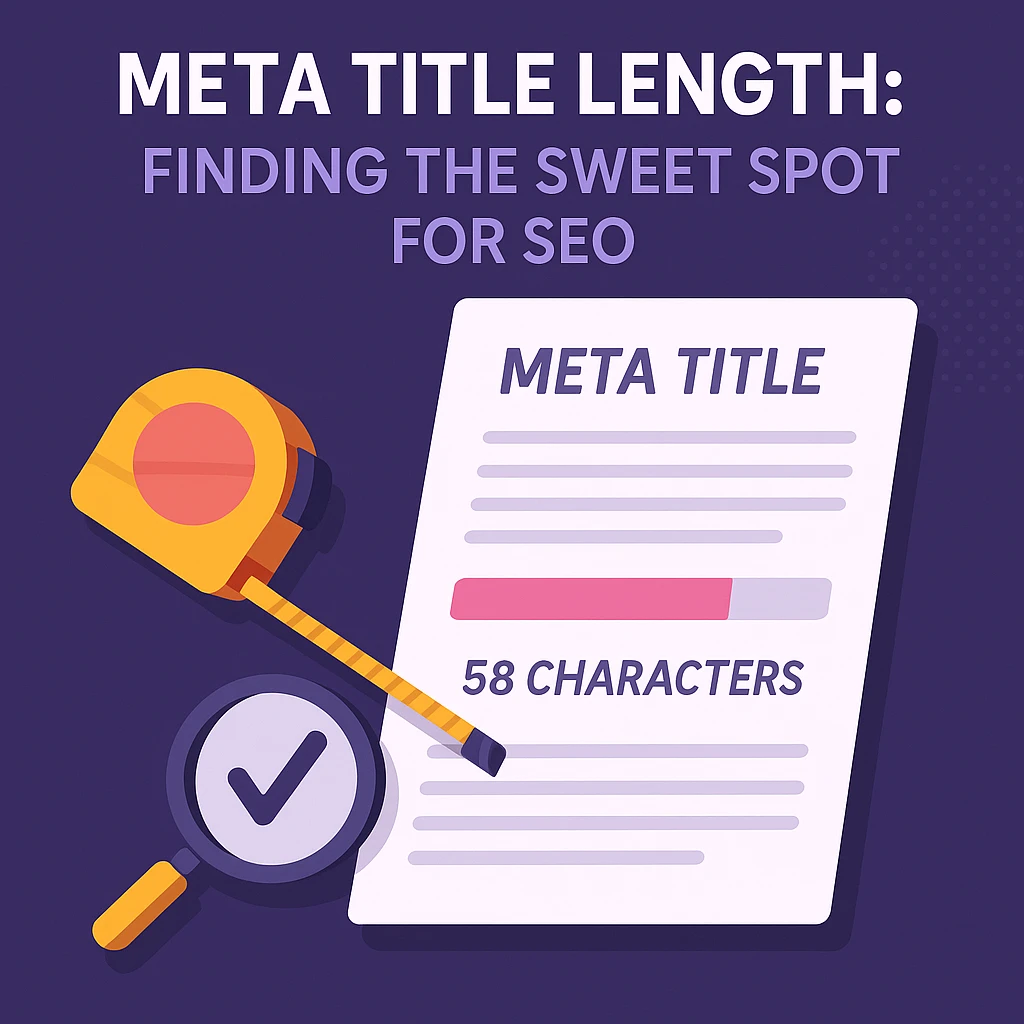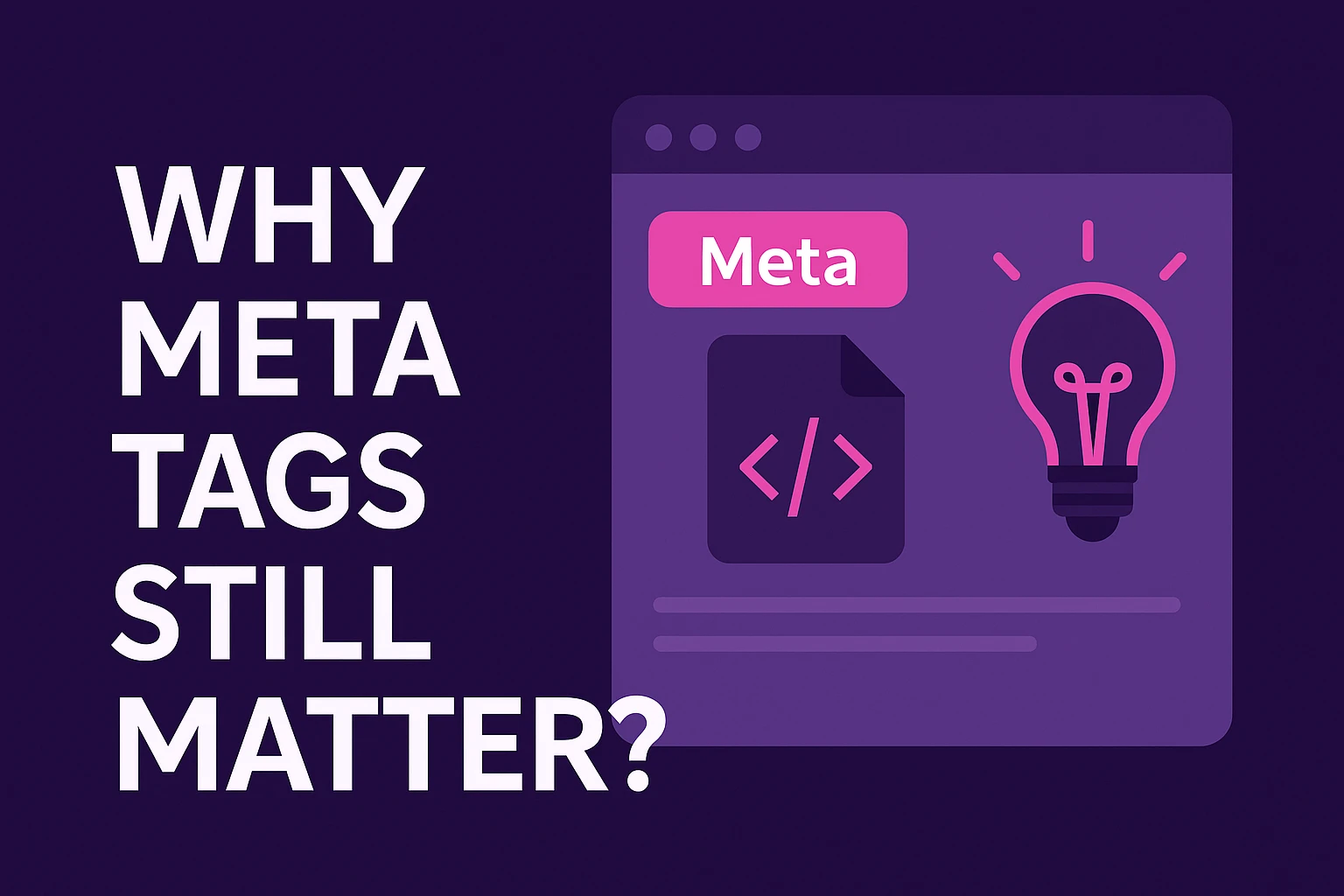Did you know that a well-crafted meta tag can significantly boost your website’s click-through rate? A compelling SEO meta description is crucial for search engine optimization, as it provides a summary of your webpage’s content. However, many websites struggle with common meta description mistakes that can hurt their online presence.
A meta description is more than just a snippet of text; it’s an opportunity to entice users to visit your site. By avoiding common pitfalls, you can improve your website’s visibility and drive more traffic to your pages.
Key Takeaways
- Understand the importance of meta tags in SEO
- Learn how to craft compelling meta descriptions
- Avoid common mistakes that can hurt your website’s performance
- Improve your website’s click-through rate with effective meta descriptions
- Optimize your meta descriptions for better search engine rankings
The Critical Role of Meta Descriptions in SEO
Meta descriptions play a crucial role in SEO, serving as a bridge between your website’s content and search engine results. They provide a concise summary of your webpage, influencing users’ decisions to click through to your site.
Effective meta description optimization is vital for improving your website’s visibility and driving more traffic to your pages. By crafting compelling and informative meta descriptions, you can enhance your website’s overall SEO performance.
How Meta Descriptions Impact Click-Through Rates
A well-written meta description can significantly boost your click-through rates (CTRs) by enticing users to click on your link. It should accurately reflect the content of your webpage and include a clear call-to-action to encourage users to visit your site.
By incorporating relevant keywords and providing a compelling summary, you can improve your CTRs and drive more qualified traffic to your website.
Why Search Engines Care About Your Meta Descriptions
Search engines like Google consider meta descriptions important because they help users understand the content of your webpage. While meta descriptions don’t directly impact search engine rankings, they influence user behavior, which can indirectly affect your website’s ranking.
By providing high-quality meta descriptions, you can improve your website’s overall user experience and enhance your SEO efforts. This makes meta description tips invaluable for anyone looking to improve their website’s search engine performance.
Understanding Meta Description Fundamentals
Meta descriptions play a vital role in search engine optimization, and understanding their fundamentals is key. A well-crafted meta description can significantly enhance your website’s visibility and click-through rates in search engine results pages (SERPs).
Defining Meta Descriptions
What Exactly Is a Meta Description?
A meta description is a short summary of a web page’s content, typically ranging from 150 to 160 characters in length. It is displayed in search engine results pages (SERPs) below the page title, providing users with a brief overview of what to expect from the page. Crafting a compelling meta description is crucial, as it directly influences users’ decisions to click through to your website.
When writing meta descriptions, it’s essential to adhere to meta description best practices, ensuring they are descriptive, concise, and enticing. This not only improves click-through rates but also enhances the overall user experience.
The Relationship Between Meta Descriptions and SERP Rankings
While meta descriptions do not directly impact search engine rankings, they play a significant role in improving click-through rates, which can, in turn, affect your website’s visibility. A well-written meta description can increase the likelihood of users clicking on your page, thereby potentially boosting your website’s traffic.
Understanding the meta description length is also crucial, as exceeding the recommended character limit can result in truncation, negatively impacting user experience and click-through rates. By balancing compelling content with optimal length, you can maximize the effectiveness of your meta descriptions.
5 Common Meta Description Mistakes That Hurt Your SEO
Avoiding common meta description mistakes can significantly boost your SEO efforts. Meta descriptions are a crucial element in how search engines display your website in search results, directly influencing click-through rates and user experience.
Overview of How These Mistakes Impact Performance
Meta description mistakes can lead to a decrease in click-through rates, negatively affecting your website’s traffic and potentially its ranking. Common mistakes include exceeding character limits, duplicating descriptions across pages, and failing to include compelling calls-to-action.
These errors not only frustrate users but also hinder search engines’ ability to understand the content and relevance of your webpage, ultimately impacting your SEO performance.
The Real Cost of Poor Meta Descriptions
The cost of poor meta descriptions extends beyond mere aesthetics; it affects your website’s visibility, credibility, and conversion rates. By optimizing meta descriptions, you can enhance user engagement, improve your website’s standing in search engine results, and drive more qualified traffic to your site.
Optimizing meta descriptions is a straightforward yet effective strategy to elevate your SEO game and ensure your website reaches its full potential.
Mistake #1: Exceeding the Character Limit
One of the most common mistakes in SEO is exceeding the meta description character limit, which can negatively impact your website’s click-through rates. Crafting meta descriptions that are concise and within the recommended length is crucial for effective search engine optimization.
The Ideal Meta Description Length for Desktop and Mobile
The ideal meta description length varies between desktop and mobile devices. For desktop, it’s recommended to keep meta descriptions under 160 characters to avoid truncation. On mobile, the limit is even shorter, typically around 120-130 characters, due to the smaller screen size. Ensuring your meta descriptions fit within these limits is vital for maintaining a good user experience.
How Truncation Affects User Experience and Click Rates
When meta descriptions are truncated, they often end abruptly, potentially omitting crucial information or calls-to-action. This can lead to a decrease in click-through rates as users may not be fully informed about the content of the page. By keeping your meta descriptions within the recommended meta description character limit, you can improve user experience and potentially increase engagement with your website.
Mistake #2: Duplicate Meta Descriptions Across Pages
One of the most overlooked SEO mistakes is having duplicate meta descriptions across different pages. This error can significantly impact your website’s search engine ranking and user experience.
Duplicate meta descriptions fail to provide search engines with unique information about each page, making it harder for them to understand the structure and content of your site.
Why Uniqueness Matters for Each Page
Having a unique meta description for each page is crucial because it allows search engines to differentiate between pages and understand their individual content. This uniqueness is key to improving click-through rates and overall SEO performance.
Unique meta descriptions help in avoiding confusion among search engines and users, ensuring that the right content is indexed and displayed in search results.
How to Audit Your Site for Duplicate Meta Descriptions
Auditing your site for duplicate meta descriptions involves checking each page’s meta description to ensure it is unique and relevant to the content.
You can use various SEO tools to crawl your website and identify duplicate meta descriptions. Once identified, revising these descriptions to make them unique will improve your site’s SEO.
By ensuring each page has a unique meta description, you’re providing meta tags that accurately represent the content, enhancing your site’s visibility and user engagement.
Mistake #3: Missing Call-to-Actions in Descriptions
The absence of a compelling call-to-action in meta descriptions is a common mistake that can significantly impact click-through rates. A well-crafted meta description not only summarizes the content of a webpage but also entices users to click through to learn more.
To understand why CTAs are crucial, it’s essential to delve into the psychology behind effective call-to-actions. A CTA is more than just a directive; it’s a trigger that motivates users to take a specific action.
The Psychology Behind Effective CTAs
Effective CTAs tap into the user’s psychological needs, such as the desire for information, the need for a solution, or the urge to be part of something exclusive. By understanding these motivations, you can craft CTAs that resonate with your target audience.
For instance, using action-oriented language like “Discover,” “Learn More,” or “Get Started” can significantly enhance the effectiveness of your meta description. As Rand Fishkin, a well-known figure in the SEO community, once said, “A great meta description is like a great ad; it should be compelling enough to make people want to click.”
Examples of Compelling Meta Description CTAs
Let’s look at some examples of compelling meta description CTAs that incorporate effective SEO meta description strategies. For example, “Explore our latest collection of eco-friendly products – Shop Now!” or “Unlock the secrets to improving your SEO – Learn More.”
These examples illustrate how a clear and direct CTA can enhance the click-through rate by making the meta description more engaging and actionable.
Mistake #4: Keyword Stuffing in Meta Descriptions
Meta description optimization requires a delicate balance between including relevant keywords and avoiding the trap of keyword stuffing. While it’s essential to incorporate target keywords to enhance search engine visibility, overdoing it can lead to a spammy appearance that deters potential visitors.
The Fine Line Between Optimization and Spam
The key to successful meta description optimization is understanding the difference between strategic keyword inclusion and keyword stuffing. Search engines have become adept at recognizing when content is stuffed with keywords in an unnatural way, and such practices can result in penalties or lower rankings.
To avoid this, focus on crafting meta descriptions that flow naturally and include keywords in a context that makes sense to the reader. This approach not only improves your SEO but also enhances the user experience by providing a clear and compelling summary of your content.
Natural Keyword Integration Techniques
Effective meta description tips include using primary keywords towards the beginning of the description, but in a way that still reads naturally. It’s also beneficial to use variations of your target keywords to capture a broader range of search queries and to avoid repetition.
By incorporating these techniques, you can create meta descriptions that are both optimized for search engines and appealing to users, thereby improving your click-through rates and overall SEO performance.
Mistake #5: Generic or Vague Meta Descriptions
Using generic or vague meta descriptions is a critical oversight that can undermine your SEO efforts and reduce your website’s visibility. A well-crafted meta description should entice users to click through to your webpage, providing a clear and compelling summary of what they can expect to find.
Why Specificity Drives Clicks
Specific meta descriptions drive clicks because they directly address the user’s search query, providing a clear indication that your webpage contains the information they are seeking. This specificity helps in building trust with potential visitors, making them more likely to click on your link rather than a more generic or vague description.
Key benefits of specific meta descriptions include: increased click-through rates, better user experience, and improved conversion rates. By clearly stating what your webpage offers, you can attract more relevant traffic and enhance your website’s overall performance.
Crafting Descriptions That Accurately Reflect Content
Crafting meta descriptions that accurately reflect the content of your webpage is crucial for maintaining user trust and ensuring a positive experience. This involves carefully summarizing the main topic or key points of your content in a concise and compelling manner.
To achieve this, focus on creating meta descriptions that are not only descriptive but also engaging. Use meta description best practices such as including relevant keywords, making sure the description is unique for each page, and ensuring it is concise and within the recommended character limit.
For meta description examples, consider the following: instead of using a generic description like “Learn about SEO tips,” use a more specific description like “Discover the top 5 SEO tips to improve your website’s ranking and drive more traffic.” This approach makes your meta description more informative and appealing to potential visitors.
Meta Description Best Practices for 2025
As we navigate the ever-changing landscape of SEO, it’s essential to stay up-to-date on the best practices for meta descriptions in 2025. With search engines continually evolving, understanding the current standards and adapting your strategies accordingly is crucial for maintaining and improving your website’s visibility.
Current Industry Standards
The ideal meta description length is a common query among SEO practitioners. Currently, the recommended length is around 155-160 characters for desktop and slightly less for mobile devices. Keeping your meta descriptions within these limits ensures that they are fully displayed in search engine results pages (SERPs), thereby enhancing click-through rates.
Mobile-Friendly Meta Description Considerations
With the majority of searches now conducted on mobile devices, optimizing meta descriptions for mobile is paramount. This involves not only adhering to the character limits for mobile but also crafting descriptions that are compelling and relevant on smaller screens. Ensuring that your meta descriptions are mobile-friendly can significantly impact your site’s performance in mobile search results.
Using Structured Data to Enhance Meta Descriptions
Structured data provides search engines with additional context about your webpage’s content, potentially enhancing how your page is represented in SERPs. By incorporating schema markup, you can provide more detailed information that can be used to create rich snippets, thereby making your search result more appealing to users and potentially increasing click-through rates.
By adhering to these best practices, including maintaining the optimal meta description length and leveraging structured data, you can improve your website’s SEO performance and drive more traffic to your site.
Tools to Analyze and Improve Your Meta Descriptions
To enhance your website’s search engine ranking, it’s essential to analyze and refine your meta descriptions using specialized tools. These tools help identify areas for improvement and provide insights into how your meta descriptions are performing.
Free Meta Description Checkers
Free meta description checkers are invaluable resources for initial assessments. Tools like SEOptimer and Moz’s Meta Description Checker offer quick analyses, helping you understand whether your meta descriptions are within the recommended length and if they’re compelling enough to attract clicks.
Premium SEO Tools with Meta Description Features
For more in-depth analysis, premium SEO tools such as Ahrefs and SEMrush provide comprehensive features. These include meta description audits, suggestions for improvement, and tracking of performance over time. Investing in these tools can significantly enhance your meta description optimization efforts.
How to Use Google Search Console for Meta Description Insights
Google Search Console is a powerful, free tool that offers insights into how your meta descriptions are performing in search results. By analyzing the data provided, you can identify which descriptions are effective and which need improvement, allowing you to make data-driven decisions.
Taking Your Meta Descriptions to the Next Level
Optimizing your meta descriptions is crucial for improving your website’s search engine ranking and click-through rates. By avoiding common mistakes and implementing effective meta description tips, you can significantly enhance your SEO meta description strategy.
To take your meta descriptions to the next level, focus on crafting unique, descriptive, and compelling summaries that accurately reflect your content. Ensure each page has a distinct meta description, and use actionable language to entice users to click.
Regularly reviewing and refining your meta descriptions using tools like Google Search Console and SEO audit software can help you identify areas for improvement. By staying up-to-date with the latest best practices for SEO meta descriptions, you can maintain a competitive edge in search engine rankings.
By implementing these strategies, you’ll be well on your way to creating meta descriptions that drive real results for your website, improving both your search engine rankings and user engagement.





